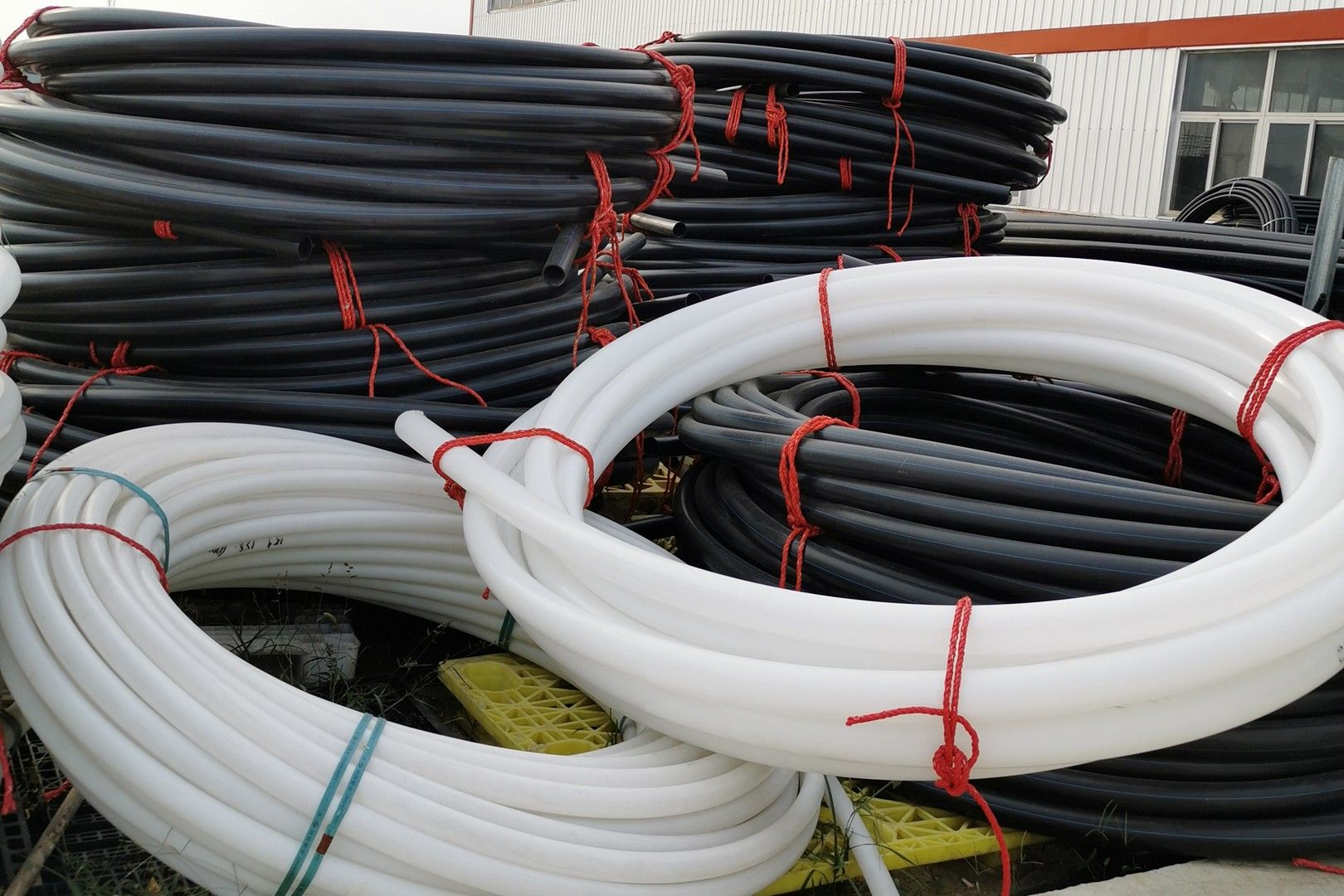
Irrigation pipes are widely used in large and small projects such as indoor and outdoor water supply in urban and rural areas, rural water improvement, farmland irrigation, brine pipelines in the salt and chemical industry, water delivery in aquaculture, mine ventilation, water supply and drainage and landscaping sprinkler irrigation.
Agricultural irrigation methods can generally be divided into traditional surface irrigation, ordinary sprinkler irrigation and micro irrigation.
Traditional surface irrigation includes border irrigation, furrow irrigation, submerged irrigation and flood irrigation. However, this type of irrigation method often consumes large amounts of water and has low water utilization. It is a very unreasonable agricultural irrigation method. Now with the improvement of people’s awareness of energy conservation and environmental protection, the irrigation methods have undergone earth-shaking changes. The emergence of irrigation methods such as micro-sprinkler belts and drip irrigation belts has gradually replaced traditional methods. Now we will introduce to you some commonly used agricultural irrigation methods.
1. Micro Spray Belt
The micro-spray belt is used to bring water to the field through water pipes and micro-spray pipes. Through the water outlet holes on the micro-spray belt, under the action of gravity and air resistance, a drizzle-like spraying effect is formed. Micro-spraying is a new type of micro-irrigation equipment. It's also known as "sprinkler irrigation belt", "micro-sprinkler belt", "sprinkler belt", "sprinkler pipe", "porous hose" and so on.
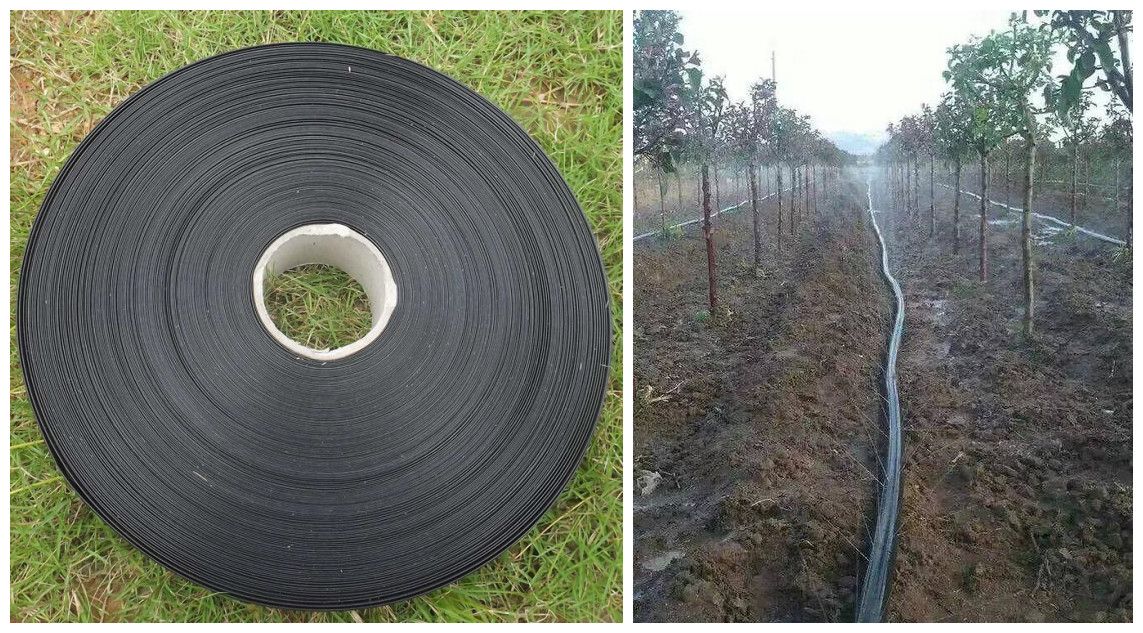
The outlet holes of the micro-spray belt are mixed with multiple and empty groups. It is arranged according to a certain distance and a certain rule, such as oblique five holes, oblique three holes, horizontal three holes, left and right holes and no holes, etc. The outlet holes generally use mechanical drills what is hole, start-up punching and laser drilling. The hole diameter is 0.1~1.2mm and the hollow type is round. Usage: Vegetables, mushrooms, nurseries, orchards, flowers, and greenhouse crops.
2. Drip Irrigation Tape
- The drip irrigation belt uses a plastic pipe (drip irrigation pipe guide) to send water to the roots of the crop through an orifice or dripper on a capillary with a diameter of about 10mm for local irrigation. It is a dripper or drip irrigation tape that enters through the outflow orifice very small, and drips water drop by drop evenly and slowly into the soil near the roots of the crop. Drip irrigation belts are divided into patch type drip irrigation belts, embedded cylindrical drip irrigation pipes, labyrinth drip irrigation belts and blue track drip irrigation belts.
- In-line drip irrigation tape is a drip irrigation tape in which the pre-manufactured dripper is embedded in the capillary in the capillary manufacturing process. Such as patch drip irrigation tape and embedded cylindrical drip irrigation tube.
- When thin-walled drip irrigation tape is to manufacture thin-walled pipes, heat-seal drip outlets of various shapes of reduced pressure channels on one side or the middle of the pipe, such as labyrinth drip irrigation tape and blue track drip irrigation tape.
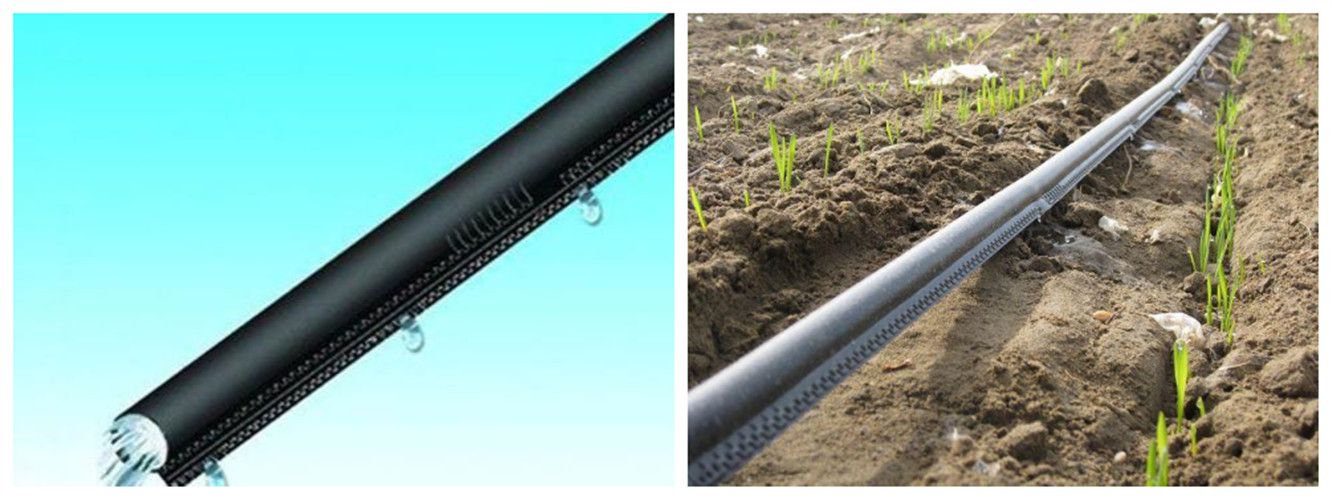
Application:
- It is used to grow crops in greenhouses and greenhouses. It reduces pests and diseases, saves fertilizers and pesticides and improves economic benefits.
- It is used for orchard irrigation. It can effectively increase yield, improve fruit quality and effectively control the growth of weeds.
- It's suitable for various field crops such as cotton, Chinese herbal medicine, watermelon, field vegetables, etc., It can improve the intensity of mechanized planting.
- The drip irrigation tape can be laid around the ridge which is easy to operate.
3. PE Irrigation Pipe
The scientific name of PE pipe is polyethylene pipe. The piping system is connected by electric heat melting and the strength of the joint is higher than the strength of the pipe body.
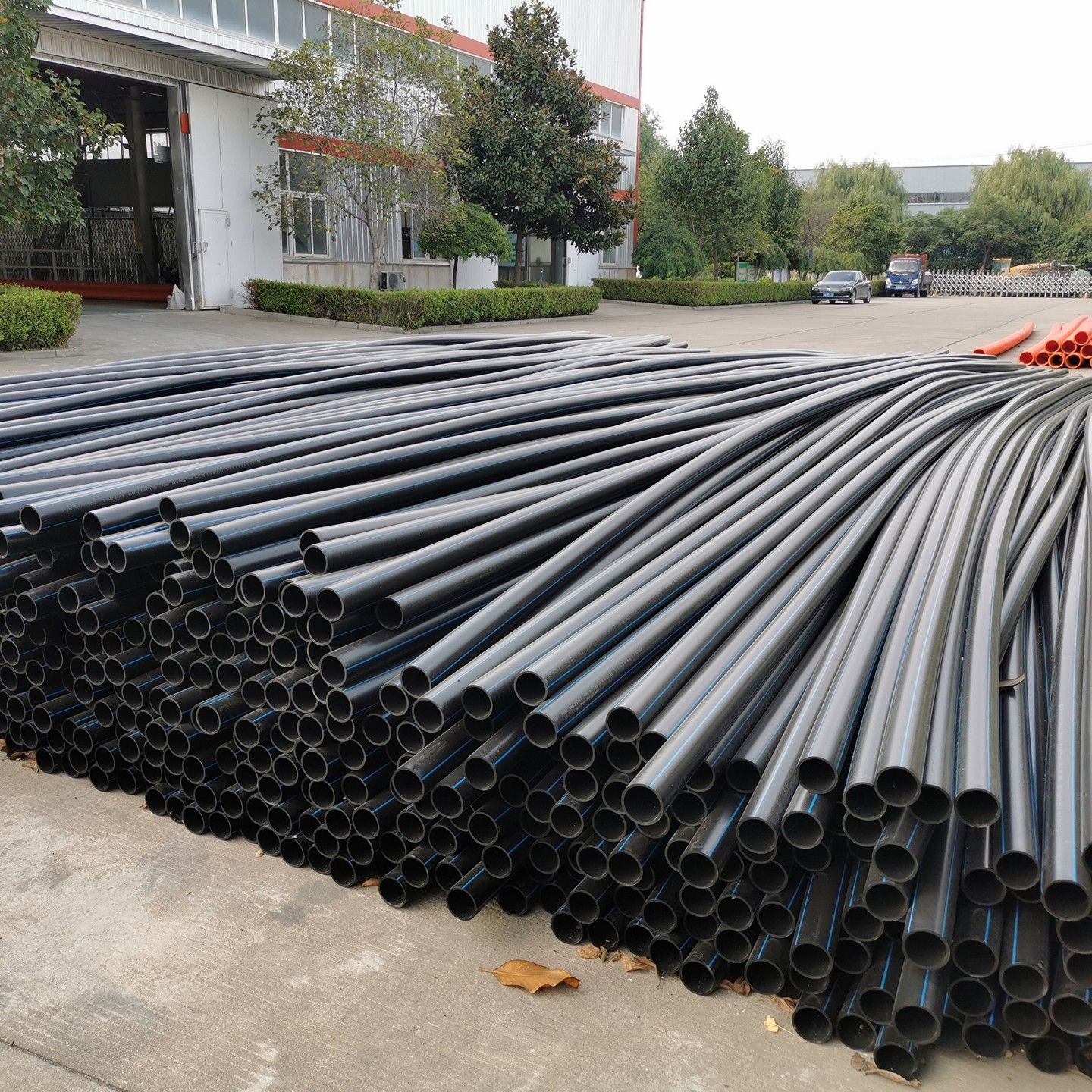
The characteristics of agricultural PE irrigation pipes
- Reliable connection: the pipe systems are connected by electric heating and the strength of the joint is higher than the strength of the pipe body.
- Good low-temperature impact resistance: during winter construction, due to the good impact resistance of the material, pipe brittleness will not occur.
- Good stress crack resistance: low notch sensitivity, high shear strength and excellent scratch resistance, outstanding environmental stress crack resistance.
- Good chemical resistance: the pipeline can withstand the corrosion of a variety of chemical media. And the chemical substances in the soil will not cause any degradation to the pipeline.
- Aging resistant and long service life.
- Good wear resistance: The comparative test of the wear resistance of the pipe and the steel pipe shows that the wear resistance of the pipe is 4 times that of the steel pipe.
- Good flexibility: The flexibility of the pipeline makes it easy to bend, and obstacles can be bypassed in engineering by changing the direction of the pipeline.
- Water flow resistance is small. It's easy to carry.
- Various new construction methods: In addition to traditional excavation methods, a variety of new non-excavation techniques such as pipe jacking, directional drilling, lining pipes, cracked pipes, etc. can also be used for construction.
Applications
- Widely used in water supply and drainage projects in towns and villages.
- Suitable for field irrigation in various types of irrigation areas.
4. PVC Irrigation Pipe
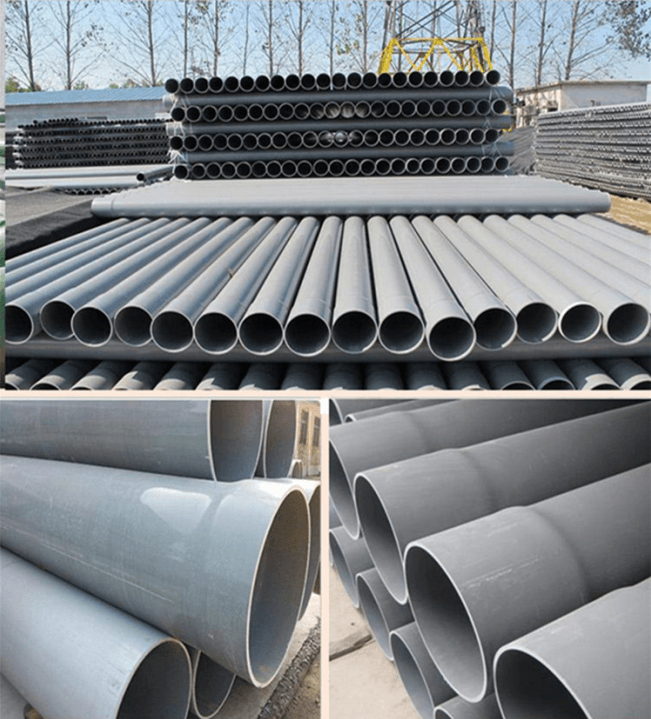
- PVC pipe has excellent acid resistance, alkali resistance and corrosion resistance. It is very suitable for the chemical industry. The wall surface of PVC pipe is smooth, the fluid resistance is small and its roughness coefficient is only 0.009 that is lower than other pipes. The pipe diameter can be reduced under the same flow rate. The water pressure resistance, external pressure resistance and impact resistance of PVC pipes are very high. They are suitable for piping projects under various conditions. Because it is Inexpensive, so it is widely used.
- PVC irrigation pipes can well follow the growth process of crops to achieve modern irrigation. The amount of water used for irrigation can be selected based on the specific moisture of crops and soil.
- The most indispensable thing about PVC irrigation pipes is that they can accurately supply water and fertilizer to the roots of crops according to the characteristics of the current weather. This can reduce the labor of manual work.
- PVC irrigation pipes can deliver a more reasonable amount of irrigation water according to the growth needs of crops, which can ensure a more timely and appropriate amount of irrigated crops and lay a solid foundation for increasing crop yields.
- Irrigation pipes are widely used in large and small projects such as urban and rural indoor and outdoor water supply, rural water improvement, farmland irrigation, brine pipelines in the salt industry, water delivery in aquaculture, mine ventilation, water supply and drainage, and sprinkler irrigation in landscaping.